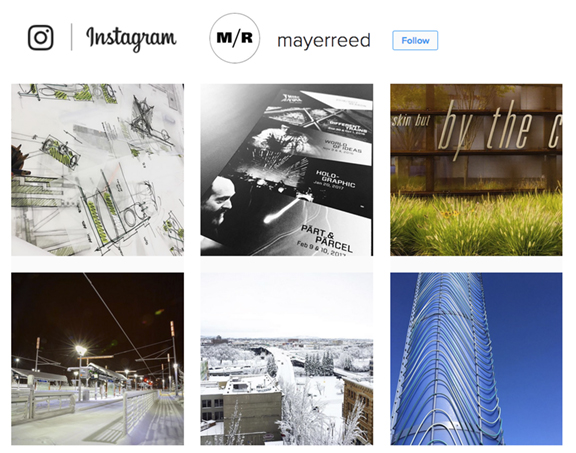 Find us at www.instagram.com/mayerreed.
Find us at www.instagram.com/mayerreed.
Rail~Volution 2.0 – the Next Revolution
This year’s Rail~Volution Conference in San Francisco was particularly timely and ambitious. The conference grabbed the housing crisis by one ear, public transit by the other ear and pulled them into a room for a little talk—for a week. What ensued, Congressman Earl Blumenuer called Rail~Volution 2.0—the next revolution.
After attending numerous presentations and experiencing first-hand the results of the Bay Area’s overloaded transit system and housing crisis, it was clear to me there were lessons to be learned. Much like the Bay Area, exploding real estate values in the Portland metropolitan region have displaced many with lower and middle incomes to the urban fringe. In these peripheral communities there is a critical need for transit to help people reach their jobs, which tend to cluster in regional centers. In this case, public transportation isn’t a fringe benefit for the sustainably-minded, but a necessity.
While at the conference I saw how affordable housing was incorporated into transit-oriented developments in Oakland and Fremont. These investments did not come easily. Community groups, transit agencies, developers, municipalities and financial institutions each played a critical role in sharing responsibility and leveraging public-private partnerships. Yet the most affordable transportation choices—walking and biking—were not always embraced in the projects. The transit station may link to jobs in the city, but walking to the store is still risky.
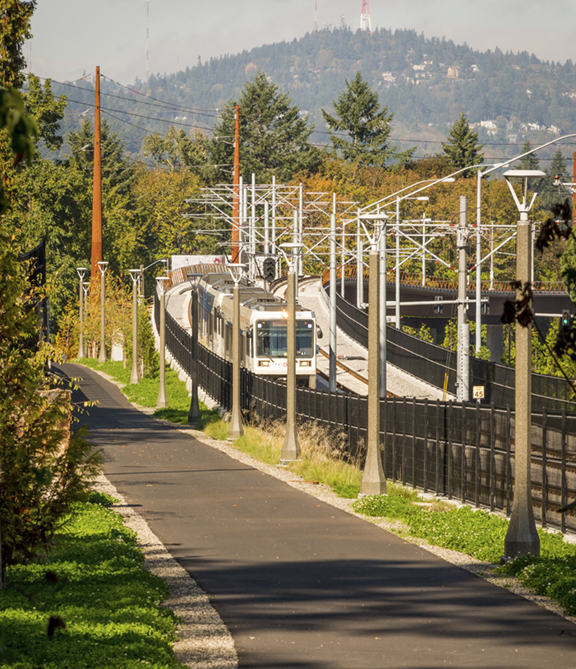
As we grow, let’s not repeat this mistake in our region in the Pacific Northwest. Let’s look beyond buildings and recognize that issues of affordability and geographic equity don’t end at the front door or even with a nearby light rail station. All residents, but particularly those with low and middle incomes, benefit from pedestrian-oriented neighborhoods that provide safe daily connections to schools, daycare, services, shopping and parks. Our cities should adopt holistic policies that plan affordable housing together with improvements to sidewalks, neighborhood greenways, safe route to schools, traffic calming, separated bicycling facilities, recreational trails and the like. Partners in active transportation are well positioned to elevate the conversation from rote affordability to measures of livability. If there is to be a revolution, let’s design an urban environment that sustains it.
Vote to Protect Our Natural Areas
Among the many important decisions voters have to consider in November is Metro’s 26-178 Protect Our Natural Areas ballot measure. Livability of our region has always been an inspiration and driving factor in our work at Mayer/Reed as well as in our personal pursuits with our families. Support of this measure will take steps toward ensuring clean water, restoring wildlife habitat and connecting people with nature. This measure demonstrates what we hold dear as Oregonians.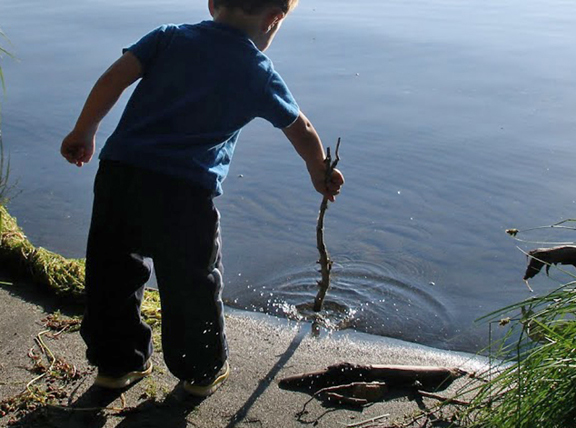 Please join us, and many others, in support of renewing Protect Our Natural Areas. For more information, see: www.protectournaturalareas.com.
Please join us, and many others, in support of renewing Protect Our Natural Areas. For more information, see: www.protectournaturalareas.com.
Re-imagining Portland’s Central Eastside as a River District
I recently presented in a discussion forum called “Central Eastside: Beyond Taking Sides” at Bora Architects during Design Week. I took this opportunity to depict an idea that I’ve thought about for decades.
Imagine the future Central Eastside Industrial District (CEID) as a very different place than it is today. While preserving it as primarily an employment-driven sector of the city, envision a place that’s more active and better connected to the river as it once was before construction of the I-5 freeway. Imagine a place where people walk down locally connected streets through the commercial, industrial, neighborhood areas to the river.
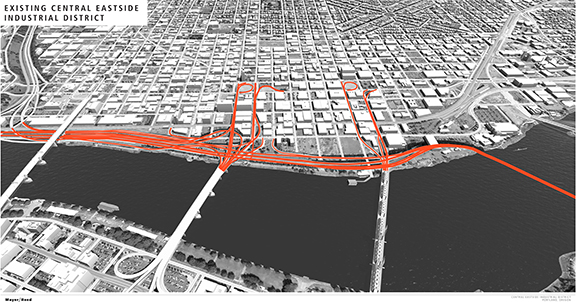
I’m not a transportation planner; I am coming at this idea wholly from an urban design and land-use perspective. This much is clear to me: it may be feasible to expand and unlock the potential of the CEID with more development parcels by replacing the interstate freeway with a local, on-grade high-capacity street. Only then can we re-establish surface streets that will enable greater local connectivity and eliminate the spaghetti of ramps and undeveloped land in our central city.
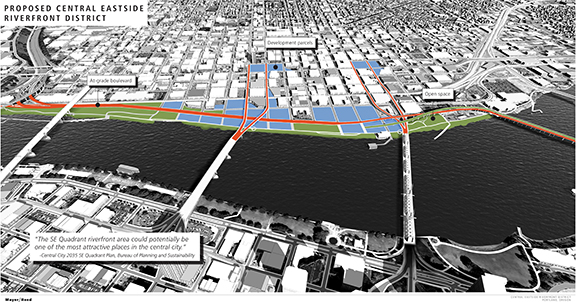
East-west surface streets connect to this new on-grade boulevard. Morrison and Hawthorne Bridges’ viaducts come to grade after they fly over the boulevard and railroad, similar to Portland’s Lovejoy ramp at the foot of the Broadway Bridge. This vision recaptures land for both expanded riverfront park and approximately 24 blocks of private development. Mixed-use development blocks adjacent to the bridges yield potential for a more active commercial waterfront; more generous open space pairs well with the Esplanade. Perhaps northbound traffic could be accommodated on the lower deck of the Marquam Bridge with southbound traffic on a new lower deck if it can be designed to meet marine clearances set by the Tilikum Crossing.
And the Marquam’s existing upper deck? Retrofit it as an incredible linear park called, “Portland’s Higher Line Trail!”
When Mayer/Reed was designing the Eastbank Esplanade before its opening in 2001, people asked whether the project was really worth doing until the freeway was removed. I would respond by saying that we as a city would never demand alternatives to I-5 until we provided this important public access to the river. Only then would people truly understand the value of our waterfront.
Fifteen years later, I feel it’s finally time to put more thought into transportation and land use alternatives for the future. Let’s seriously consider multi-modal transportation links along with more blocks in the CEID for growth, job creation, and connectivity to the river.
Two Case Studies:
Harbor Drive / Governor Tom McCall Waterfront Park, Portland, OR
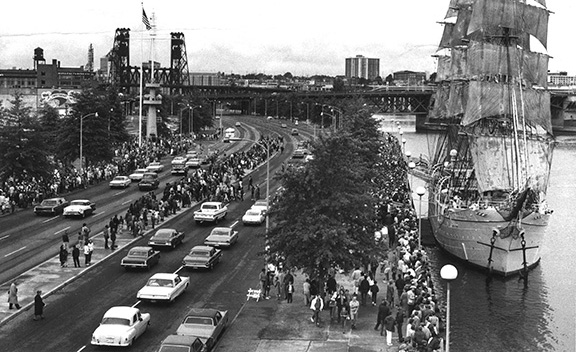
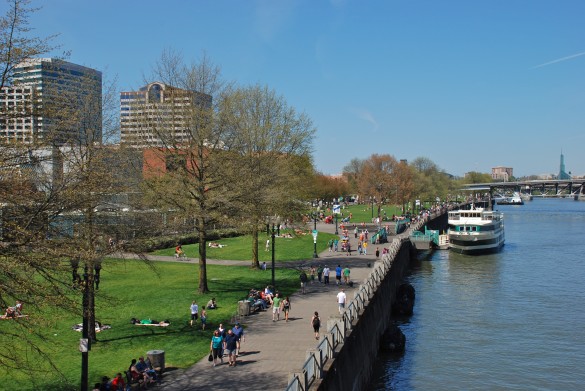
In the 1970s, Portland became known as a visionary city by replacing Harbor Drive freeway with Gov. Tom McCall Waterfront Park and Naito Parkway. In fact, this move has been frequently cited as a milestone in urban planning. Meanwhile, the 1960s era I-5 cut off the CEID, complicated bridge connections and made local access more difficult. Over time, the CEID became disconnected and seemed to lose its soul.
The Embarcadero, San Francisco, CA
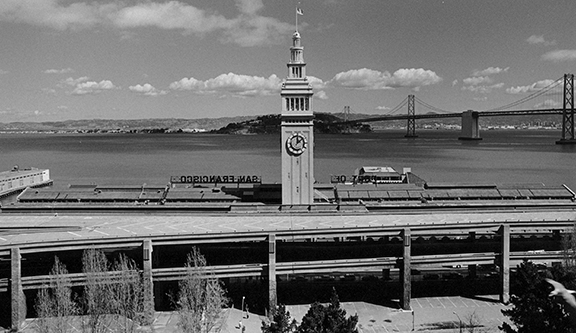
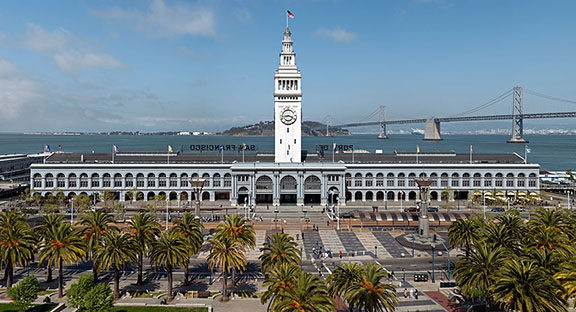
A large earthquake allowed San Francisco to re-imagine the freeway rimming its frontage on the bay. When all the debris was cleared and infrastructure put into place, an entirely new waterfront emerged. Now the on-grade Embarcadero provides multi-modal transportation links and a character-defining, pedestrian-friendly street that features historic buildings, parks and an active waterfront.
